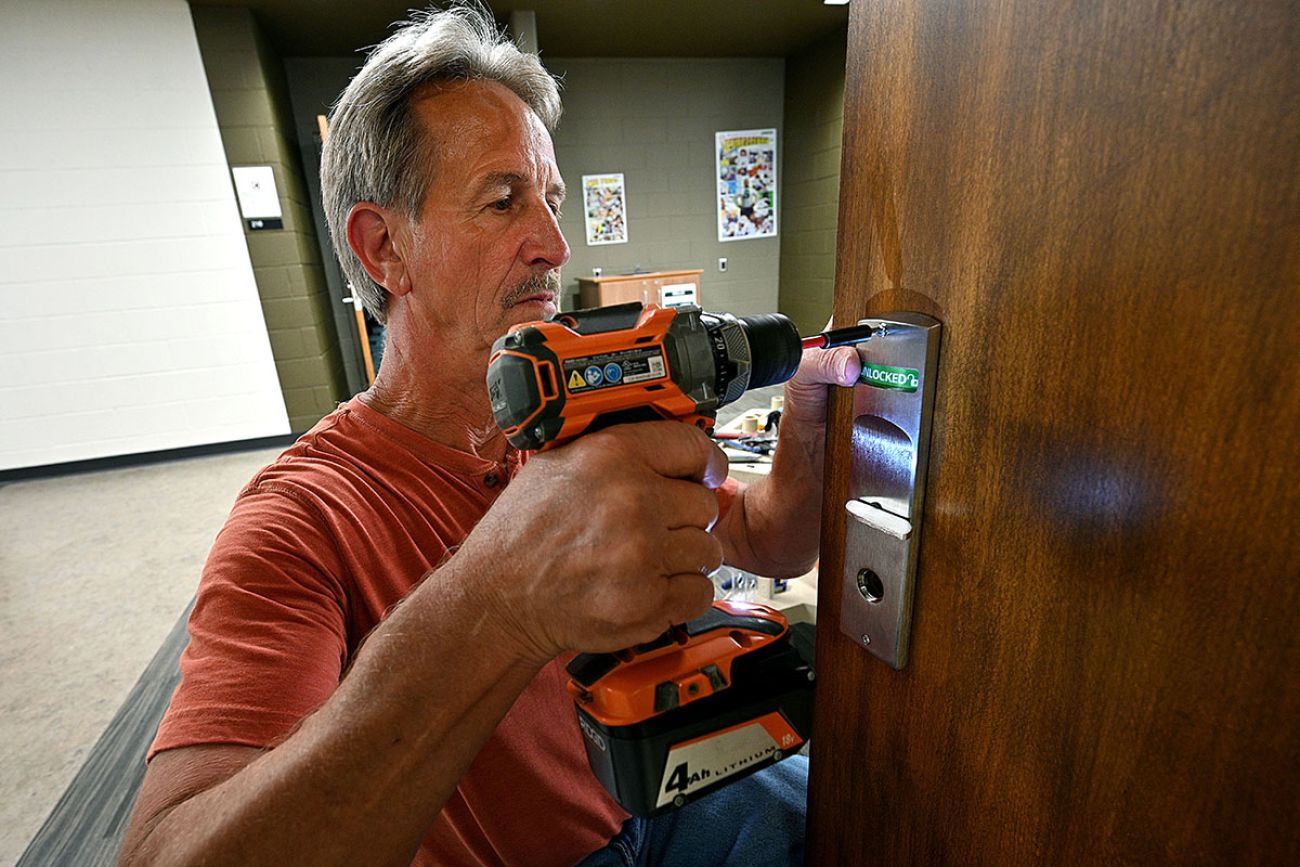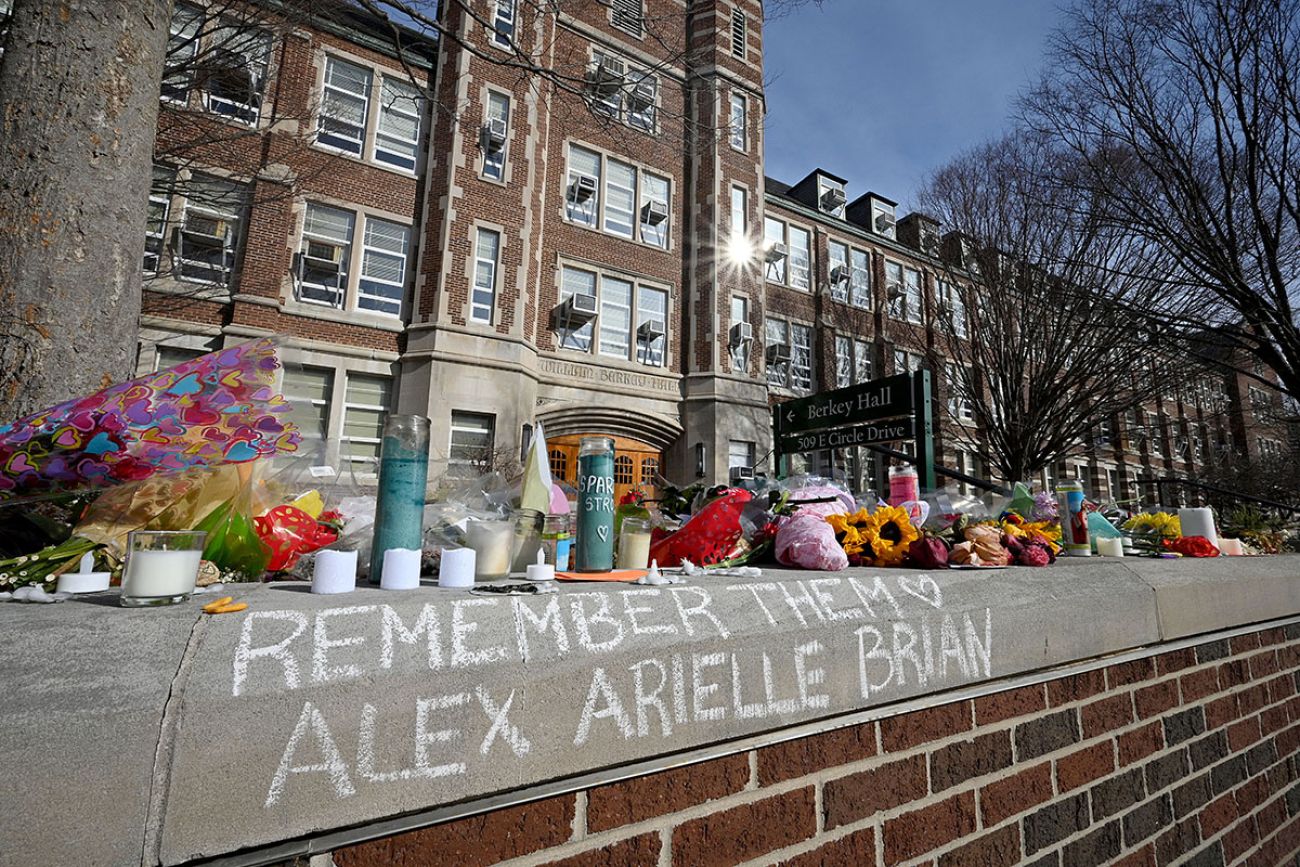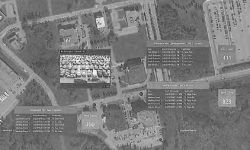Two years later: How Michigan State University has changed campus safety
- Michigan State University is centralizing its remote locking system for buildings, emergency notification system and vast array of security cameras
- Chief of Police says university is safer than it was two years ago
- MSU has added classroom door locks and added more outdoor sirens
As the Michigan State University community reeled from a campus shooting in 2023, leaders grappled with how to improve safety. In the two years since a gunman shot and killed three students and critically injured five others, university leaders tell Bridge that the campus is safer than it was on that tragic day.
“The things we’ve put into place is to really give our students, faculty and staff a better advantage when they’re faced with some type of criminal element on campus,” Chief of Police and Executive Director of Public Safety Mike Yankowski told Bridge Michigan in an interview.

A large number of the changes recommended in the aftermath of the shooting have been implemented, including the installation of door locks on classrooms. The campus also has restricted access to buildings at night, and about 5,600 students have taken training for what to do if there is an active violence situation. Though a small part of the total student population, the number of trained students has grown since before the shooting.
MSU DPPS estimates that of the 78 recommendations made in an after-action review of how the school and law enforcement responded, 52 recommendations are completed, 27 recommendations are ongoing or in process and one is not completed.
Leaders acknowledge work is ongoing to improve security. At the Security Operations Center, large screens show security camera footage. Employees monitor the footage and have access to logs that automatically update when people swipe into buildings. Plus, the center can trigger an emergency alert to the campus if needed.
The center operates 24/7 and is staffed by 12 full-time staff members and a supervisor.
On the night of the shooting, MSU did not have the ability to monitor its roughly 2,000 camera feeds in real-time. Now, employees of the Security Operations Center can pull up specific camera feeds. The school also uses artificial intelligence to identify specific items in already captured footage.
Leaders had sought to integrate the camera feeds into one unified platform before the shooting and requested proposals from companies a month before.
Operations Center staffers also have the capability to remotely lock down doors. Security officials are working to fully integrate all buildings into the same remote door-locking system.
“The buildings are secure on the current system, it’s just moving it to a new system,” said John Prush, director of public safety operations at the Department of Police and Public Safety.
DPPS has spent nearly $4 million on implementing new security software, setting up the Security Operations Center and adding sirens, safety phones and cameras, said department spokesperson Nadia Vizueta.
What else has changed
In the days following the shooting, students said they were concerned they couldn’t lock their classroom doors.
MSU evaluated 800 classrooms and installed thumblocks in 520 classrooms, electronic locks in 150 classrooms, lockdown buttons in 56 classrooms and found 74 classrooms needed no updates. The project cost $4 million according to Erica Venton, a spokesperson for MSU Infrastructure Planning and Facilities.

Roughly two weeks after the shooting, then-interim President Teresa Woodruff promised door locks and restricted access to buildings at night.
Two years ago, confusion delayed officials from sending out a mass notification to the campus. An MSU sergeant tried to order a campus lockdown alert two minutes after the gunman opened fire but the alert was not sent for another 10 minutes, records show.
MSU security efforts by the numbers:
Number of security camera ‘views’: 2,299 camera views across 1,555 cameras connected to the security platform
Number of students who have taken optional active violence training: 5,600
Number of employees who have taken optional active violence training: 9,400
Total number of classrooms evaluated for door locks: 800
Total number of classroom thumb locks installed: 520
Total number of classroom electronic locks installed: 150
Total number of new lockdown buttons installed: 56
Total number of classrooms that required no additional work: 74
Sources: MSU Department of Police and Public Safety, MSU Infrastructure Planning and Facilities
Since then, MSU automatically added 51,000 students and 7,000 employees’ cell phone numbers to the system, said Vizueta.
Also, outdoor speakers typically used for tornado sirens are now able to make audio emergency announcements and MSU also added two sirens north of the Red Cedar River.
Related:
- Michigan State security upgrades a work in progress, one year after shooting
- Michigan State sought to be leader in campus security. Upgrades came too late
- After shooting, MSU adding AI surveillance to detect threats, count people
Woodruff also announced students and employees would be required to take active violent intruder training. The school backed off on the requirement and instead strongly recommends students and employees take the course.
A small share of students had taken a similar training before the shooting.
Technology upgrades and AI
MSU has also turned to artificial intelligence to help improve security.
Yankowski gave the example of someone calling 911 to report someone who is looking into different cars in a parking lot. The Security Operations Center could pull up specific camera feeds in the area where the caller describes.
“But ultimately we have to justify every single time that we use these type of technology to keep a community safe,” he said.
Yankowski said the DPPS is not using the technology "capturing faces, running them through a database and keeping track of all those records.” It’s only being used, Yankowski said, to “identify a human face.”
DPPS may then send that photo to the State of Michigan and then the state would use its database to help MSU “with a lead.”
“I think it’s important to point out that with facial recognition: it’s just that. It’s a lead. There’s other variables and factors that you have to authenticate whether that person is John Doe or not.”
Prush said security footage is deleted 30 days after being captured.
The ongoing effort to improve safety at MSU is “not all about technology,” Yankowski said. “I think it’s important that we understand that human beings, we all play a role in our safety.”
“It is a force multiplier, period,” Yankowski said. “...So having the human components to help us gauge a lot of video in a short time period is a time saver and a game changer trying to keep a community safe.”
Michigan Education Watch
Michigan Education Watch is made possible by generous financial support from:
Subscribe to Michigan Education Watch
See what new members are saying about why they donated to Bridge Michigan:
- “In order for this information to be accurate and unbiased it must be underwritten by its readers, not by special interests.” - Larry S.
- “Not many other media sources report on the topics Bridge does.” - Susan B.
- “Your journalism is outstanding and rare these days.” - Mark S.
If you want to ensure the future of nonpartisan, nonprofit Michigan journalism, please become a member today. You, too, will be asked why you donated and maybe we'll feature your quote next time!






